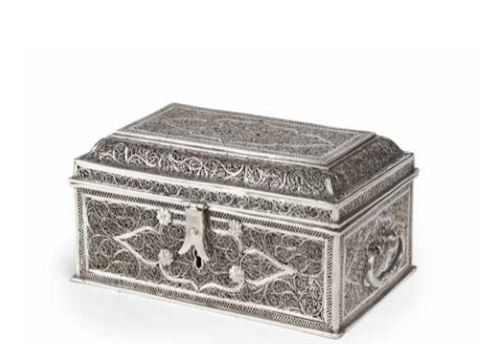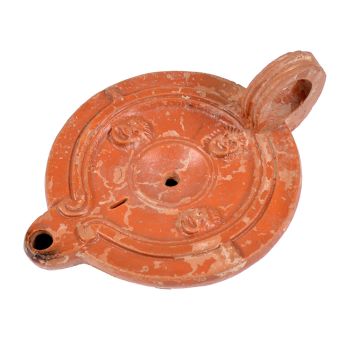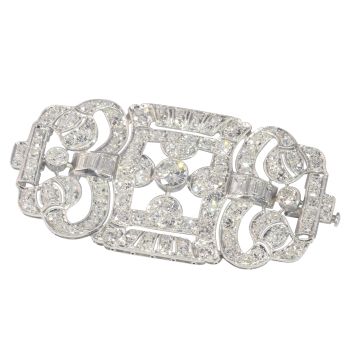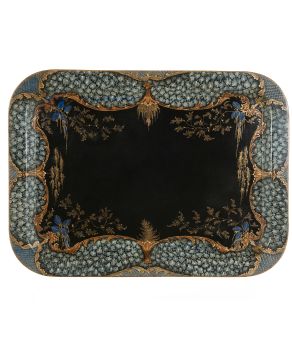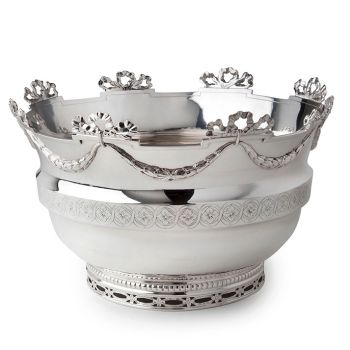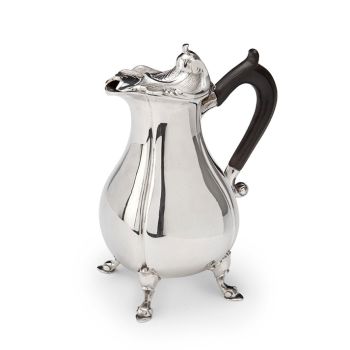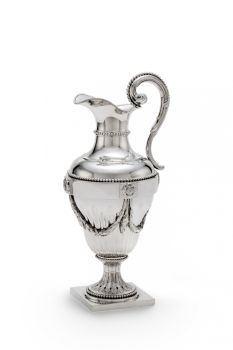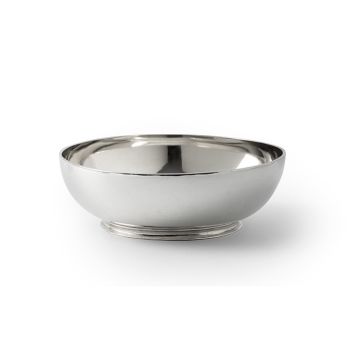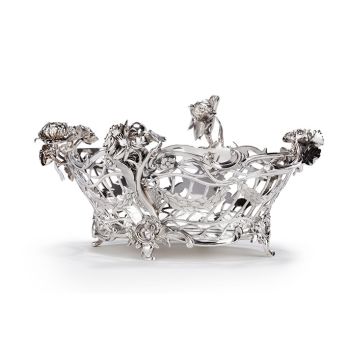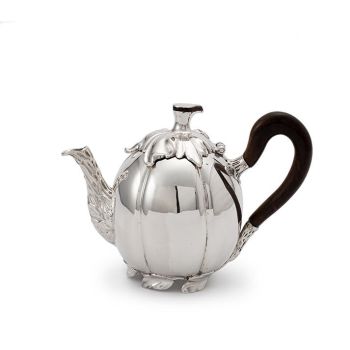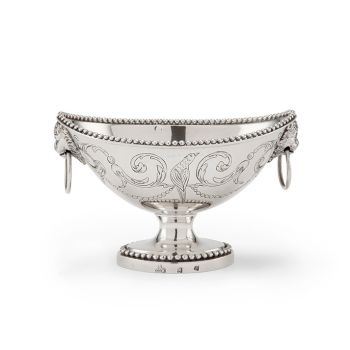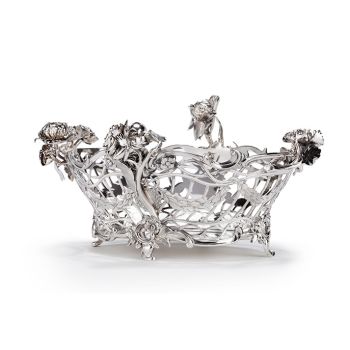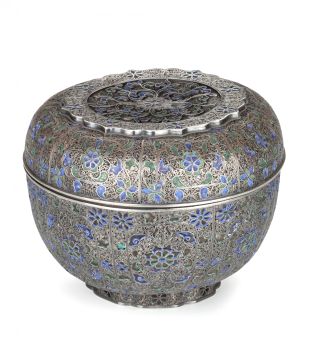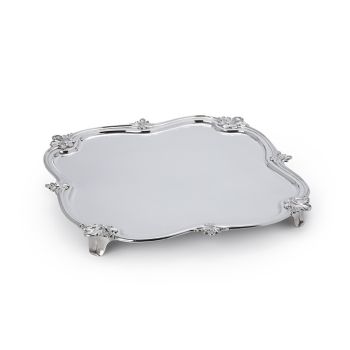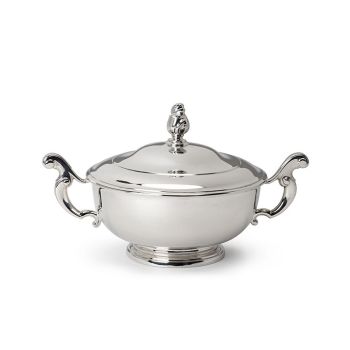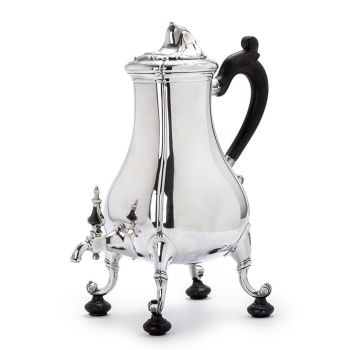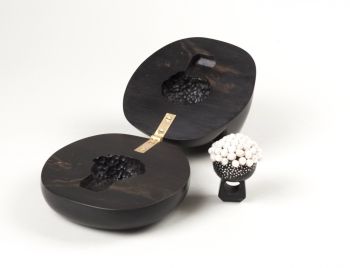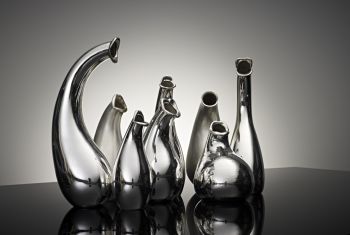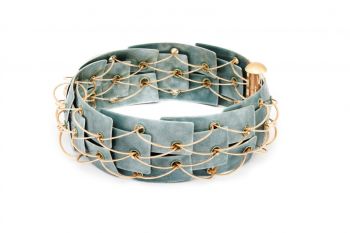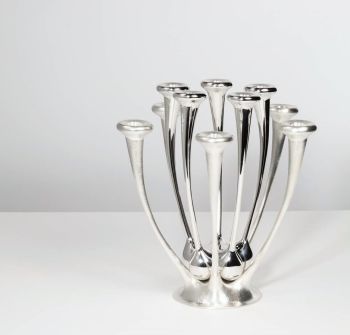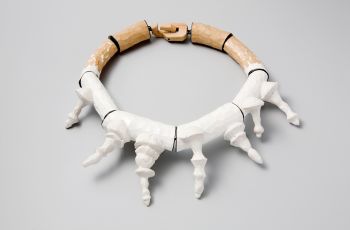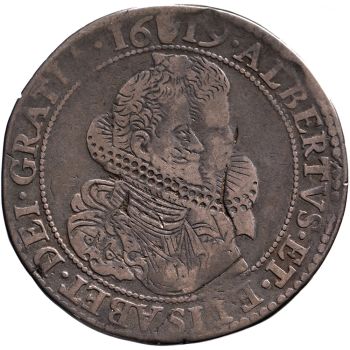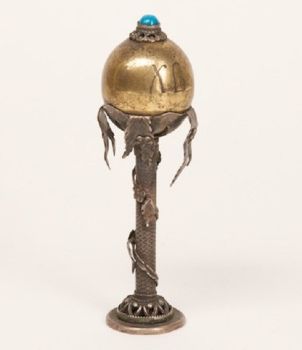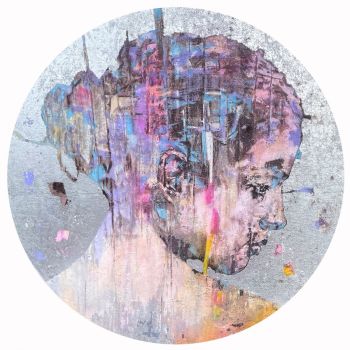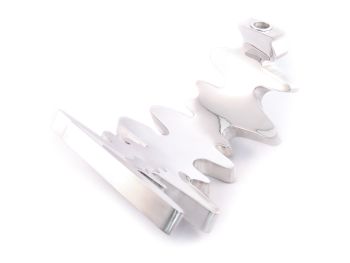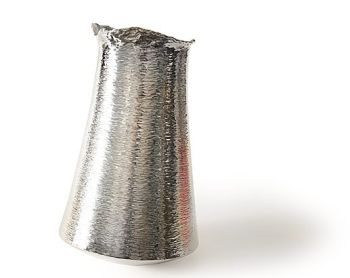Filigree casket 18th century
Unknown artist
Silver
8 ⨯ 15.90 ⨯ 9.40 cm
Currently unavailable via Gallerease
- About the artworkIndia/Goa or Karimnagar, 18th century
Silver filigree Height: 8 cm, width: 15.9 cm, depth: 9.4 cm
Silver filigree from the East became very popular in Europe in the early 17th century.
Initially most of it was imported into Europe through Lisbon coming from Goa but not necessarily made there. Later in the 17th and 18th century most silver filigree from the East arrived in Amsterdam or London coming from the Dutch East Indies/ Kota Gadang, India/Karimnagar and China/Canton and less so from Goa. Particularly the VOC, Dutch East India Company brought back many artefacts made of silver filigree in the East for the royal collectors in the West. Louis XIV of France, Elector Frederick William of Brandenburg, Amalia van Solms in the Netherlands, Christian V of Denmark and the Russian Tsars, Peter and Catherine the Great all started their own collection of silver filigree by buying in Amsterdam. Since the VOC could not and did not obtain these objects in Goa, they had to find them elsewhere. However, since silver filigree usually does not have any maker’s marks it is difficult to tell where it was actually made. - About the artist
It might happen that an artist or maker is unknown.
Some works are not to be determined by whom it is made or it is made by (a group of) craftsmen. Examples are statues from the Ancient Time, furniture, mirroirs, or signatures that are not clear or readible but as well some works are not signed at all.
As well you can find the following description:
•“Attributed to ….” In their opinion probably a work by the artist, at least in part
•“Studio of ….” or “Workshop of” In their opinion a work executed in the studio or workshop of the artist, possibly under his supervision
•“Circle of ….” In their opinion a work of the period of the artist showing his influence, closely associated with the artist but not necessarily his pupil
•“Style of ….” or “Follower of ….” In their opinion a work executed in the artist’s style but not necessarily by a pupil; may be contemporary or nearly contemporary
•“Manner of ….” In their opinion a work in the style of the artist but of a later date
•“After ….” In their opinion a copy (of any date) of a work of the artist
•“Signed…”, “Dated….” or “Inscribed” In their opinion the work has been signed/dated/inscribed by the artist. The addition of a question mark indicates an element of doubt
•"With signature ….”, “With date ….”, “With inscription….” or “Bears signature/date/inscription” in their opinion the signature/ date/ inscription has been added by someone other than the artist
Artwork details
Related artworks
Unknown artist
Monumental wooden icon: Saint Nicolas of Mozaisk1600 - 1650
Price on requestKunsthandel H.W.C. Dullaert Icons
1 - 4 / 12Reynier de Haan
An elegant Louis XVI Dutch Silver Monteith bowl 1778
Price on requestJacob J. Roosjen SRI
Reynier de Haan
An elegant Louis XVI Dutch Silver Monteith Bowl 1778
Price on requestJacob J. Roosjen SRI
Unknown artist
An Indian silver filigree casket with hinged coverearly 20th
Price on requestZebregs & Röell - Fine Art - Antiques
Elisabeth Treskow
Afghan lapis lazuli inlaid with gold on a silver stand1950 - 1960
Price on requestJacob J. Roosjen SRI
1 - 4 / 24Unknown artist
A silver spoon commemorating Juff’ Margareta van Hoorn1656 - 1694
Price on requestZebregs & Röell - Fine Art - Antiques
Unknown artist
A GILT-SILVER SRI LANKAN DOCUMENT SCROLL CONTAINER 19th century
Price on requestZebregs & Röell - Fine Art - Antiques
Unknown artist
An Indian part-gilt silver-clad ceremonial sceptre or mace with a tiger’s head1850 - 1900
Price on requestZebregs & Röell - Fine Art - Antiques
 Curated by
Curated byDanny Bree
Unknown artist
AN UNUSUAL INDONESIAN LOBBED SILVER DISHlate 17th
Price on requestZebregs & Röell - Fine Art - Antiques
Unknown artist
Silver Russian Presentation Easter Egg1880 - 1899
Price on requestH.W.C. Dullaert Art & Antiques Dealer
Unknown artist
An Indian silver filigree casket with hinged coverearly 20th
Price on requestZebregs & Röell - Fine Art - Antiques
1 - 4 / 24

